




TUESDAY 6TH AUGUST 2024
1PM, Bald Blair Guyra NSW
OPEN DAY
SUNDAY 4 AUGUST, 10 - 2PM
Inspections Welcome by Appointment
100+ BULLS 100+




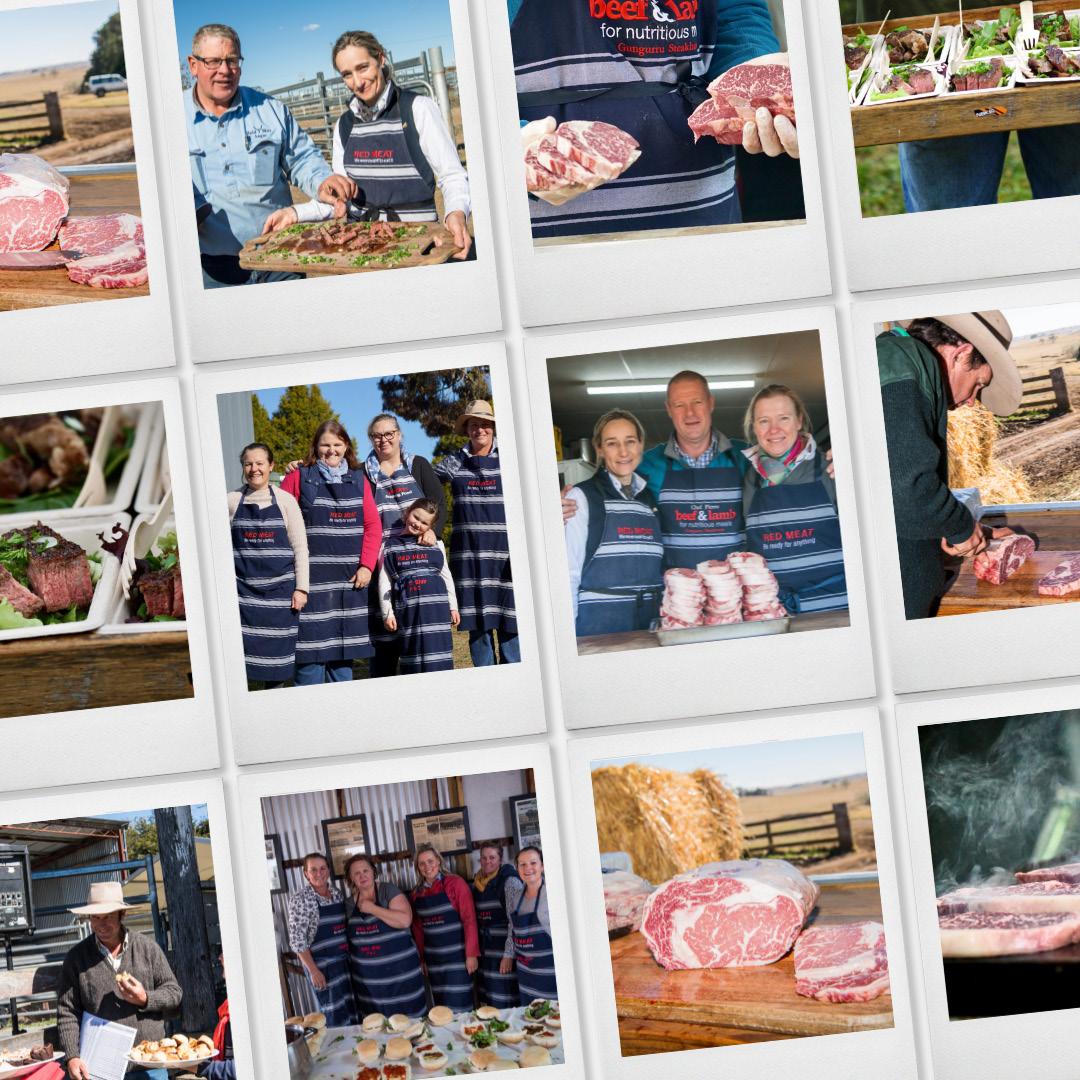




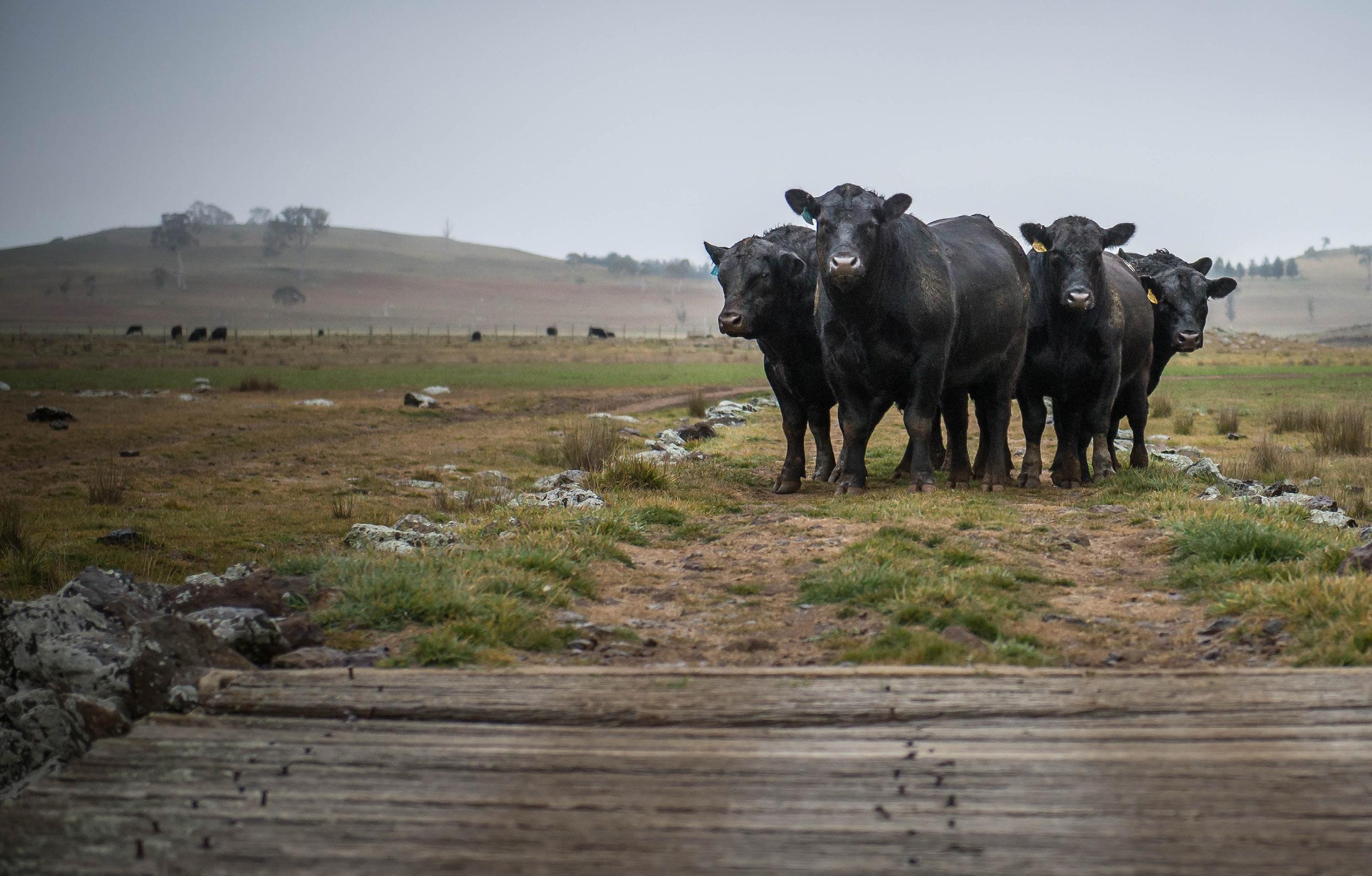

On behalf of my family and the team at Bald Blair, I would like to welcome those returning to Bald Blair and those visiting for the first time. Since 1898 the White family have been breeding angus cattle at Bald Blair, 10kms East of Guyra on the Northern Tablelands of NSW. In 1908 the Bald Blair stud was registered and in 1919 the Angus Society of Australia was formed and Bald Blair was a founding member. For 116 years this herd has continued to produce Bulls for its own use and for broader industry. This is the 52nd consecutive year of on property Bull Sales.
Now in 2024 Bald Blair Angus will have on offer over 100 Bulls again. There are 75 Bulls Rising 2 Years of Age, 27 Bulls Rising 18 Months of Age and 10 Bulls at 12 Months of Age. I am happy with this years sale team, with both the number of bulls and the diversity of bloodlines on offer for you to choose from. Once again, we have the majority of bulls Parent Varified, with only 2 Sire Verified at the time the catalogue went to print. Our breeding programme at Bald Blair is market focused where progeny of these bulls are most likely to go. Fertility, Calving Ease, Growth, Carcase, Structure, Temperament, Longevity and diversity of Pedigree are all important in bringing together this sale team. We continue to use the latest technologies,including Genomically enhanced EBV’s made available to us in the Trans Tasman Cattle Evaluation (TACE) to assist in our breeding decisions. We continue our on going supply of Feeder steers to Rangers Valley as we continue the development of our commercial operation.
Sam, Kirsty, Abbott and Arthur White.

Register Early: You can scan this QR code to fill in an online form or turn over the page to use the printed form to register early for the bull sale. The information will go straight to our agent Elders. When you arrive at Bald Blair on sale day please go straight to the Elders desk and they will have your bidder number/card. Please note preregistrations close at 5.00pm on Monday 5th August 2024.
Online bidding via AuctionsPlus: Please scan the QR code to see our AuctionsPlus catalogue listing. If you are unable to attend our female sale at Bald Blair, it will be live streamed on AuctionsPlus.
If you are not already registered with AuctionsPlus, please take the time to register now, so you can become familiar with the platform.
Online Catalogue: We have submitted our Angus sale team to the Angus Society and the online catalogue is now available – please scan the QR code. The online catalogue is a very powerful tool that will enable you to search for the right bull for your breeding program. Some options may be to search by sire lines, or EBV highest to lowest eg: if you are looking for bulls with an IMF of between 3 and 4 you will be able to find them. Alternatively if you look closely at INDEXES, eg Angus Breeding Index (ABI) and Heavy Grain
Index (HGN) which most closely reflect our breeding direction then you can select bulls accordingly by ranking from highest to lowest.
Remember it is important to look behind the index and ensure it fits your breeding program. Sam is happy to talk you through how to do this or go to the Angus Society Education area on their website https://www.angusaustralia.com.au/education/ using-angustech/database-search/







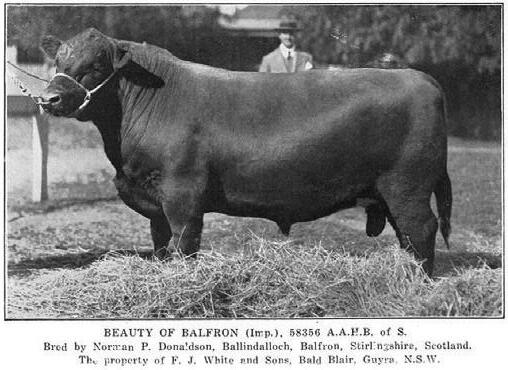
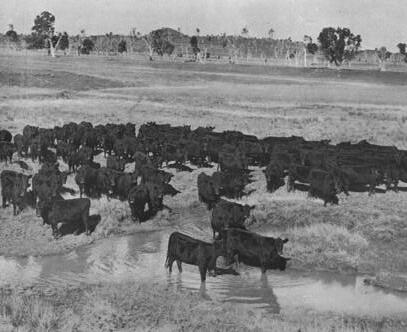





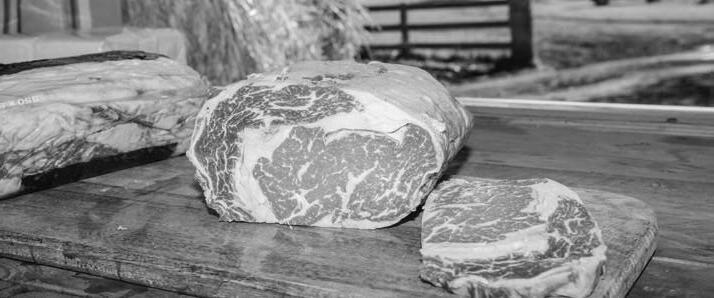

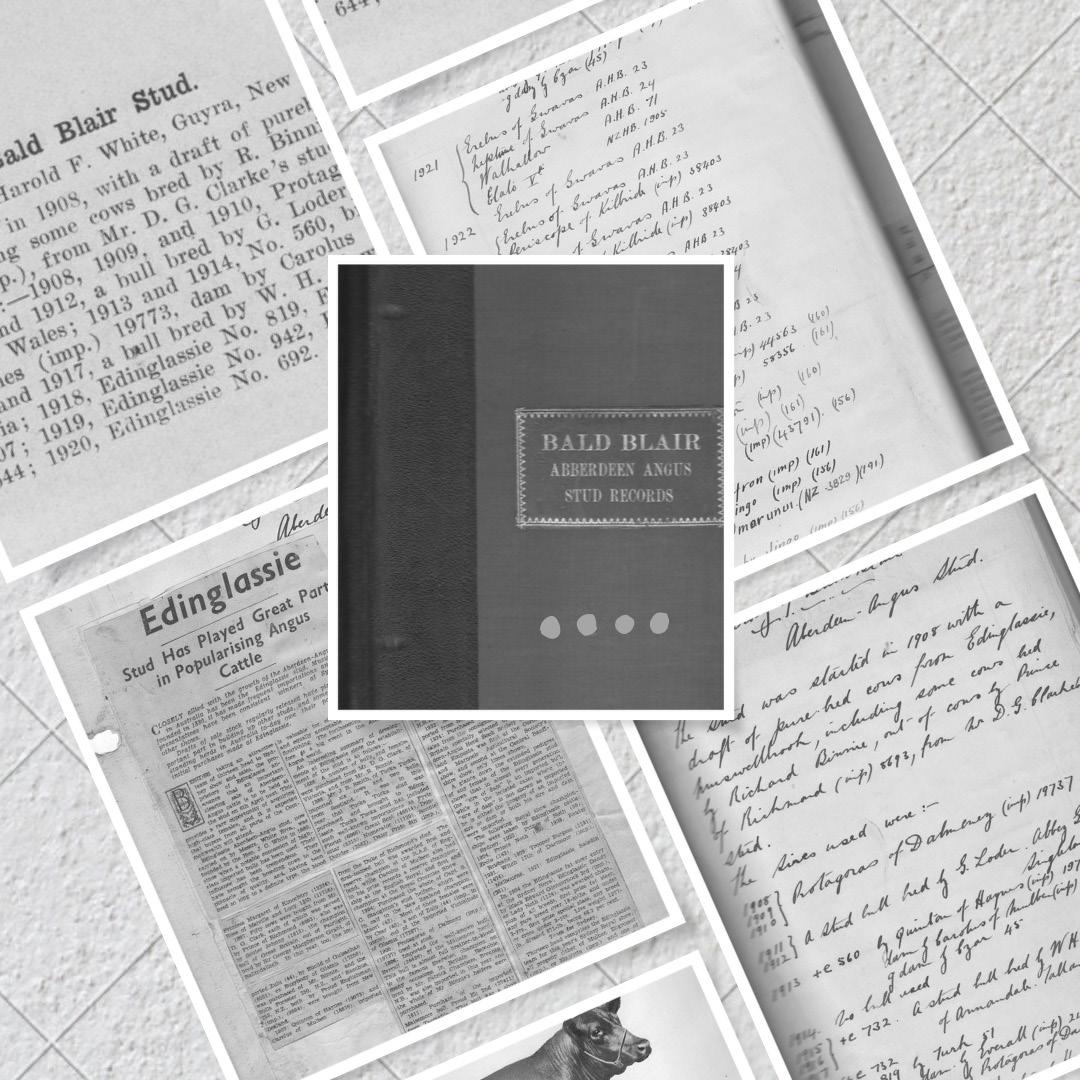


Inspections by appointment are welcome anytime in the lead up to the bull sale. Please call Sam White on 0438 792 140 or email samwhite@baldblair.com.au to arrange a time.
On Sunday 4th August from 10am until 2pm the bulls will be in the yards and you are welcome to inspect them. Refreshments available.
Rebate
1. A rebate of 4% is payable to all agents who introduce their clients in writing prior to sale day and attend with or on behalf of their clients and settle within 7 days.
2. A rebate of 2% is payable to all agents who introduce their clients in writing prior to sale day, but do not attend the sale and settle within 7 days.
Bald Blair has a biosecurity plan prepared in conjunction with our local vet Dr Leisa Brown. We are JBAS 7 herd.
Insurance
We recommend insuring your new bull on sale day. A Elders representative will be available at the sale to organise this.
GST
The sale is GST EXCLUSIVE. If you buy a bull for $4,000 then you will be invoiced the purchase price plus GST. The total of the invoice will be $4400.00.
Herdbook and APR tagging code.
• Bulls with a BLUE TAG are on the Angus Society Herdbook register.
• Bulls with a YELLOW TAG are on the APR register. NLIS tags. All bulls have a NLIS tag that corresponds with their management tag.
DNA Suffix Key: PV: both parents have been verified by DNA, SV: the sire has been verified by DNA, DV: the dam has been verified by DNA, #: DNA verification has not been conducted, E: DNA verification has identified that the sire and/or dam may possibly be incorrect, but this cannot be confirmed conclusively
Please ensure the buyer instruction information sheet on the last page of the catalogue is completed in full to avoid any errors with your delivery instructions, accounts and registration transfers. Vendor declarations and animal health statements will be available at the sale.
The Bald Blair Public School P & C catering committee will be providing complimentary morning tea and lunch at the bull sale. Disclaimer
Every care has been taken in the compilation of this catalogue to ensure the accuracy of information supplied.

All bulls offered for sale have undergone reproductive physical examination and a semen test on the 13, 14 & 15th May 2024. Then follow up on 25/6/2024. The semen test involved crush side examination for motility and specialist laboratory examination for morphology as prescribed by the Australian Cattle Veterinarians Association. At the time of printing the results of the retests were not available, but will be by sale time.
An independent structural assessment has been done on our bull sale team. This service is provided by Dick Whale, Independent Breeding Services.
Vaccination and drench regime – all bulls have received:
• Tick Fever Vaccinations
• Vibriovax (Vibriosis)
• 7n1 (Leptospirosis)
• Pestigard Vaccine (Pestivirus)
• Baymec Pour On
• Flukazole C
• Brute (Lice)
• BoviShield MHOne
Please ensure boosters are continued to ensure ongoing protection for your bulls. We continue to sample our herd for the incidence of Pestivirus exposure and have undertaken whole herd vaccination with Pestiguard on the property Bald Blair to eradicate it from our herd. All two year old and yearling bulls have been tested for the presence of pestivirus and all were found to be negative. You can also be comfortable that we have a complete herd vaccination program in place. Please maintain the bulls vaccination program with annual boosters for lepto and vibrio with 7in1 and Vibriovax.
AM, NH, DD and CA are genetic defects. Please see detailed description over the page. Bald Blair Herd remains committed to identifying and not offering carrier animals, with these genetic defects for sale at our on property auction.


1

Go to www.auctionsplus.com.au to register at least 48 hours before the sale.
2 3 4 5
6 9 8 7
Select “Sign Up” in the top right hand corner.
Fill in buyer details and once completed go back to Dashboard.
Complete buyer induction module (approx. 30 minutes).
Fill out your name, mobile number, email address and create a password.
AuctionsPlus will email you to let you know that your account has been approved.
Go to your emails and confirm the account.
Log in on sale day and connect to auction.
Return to AuctionsPlus and log in.
Select “Dashboard” and then select “Request Approval to Buy”.
Bid using the two-step process –unlock the bid button and bid at that price.
If you are successful, the selling agent will contact you post sale to organise delivery and payment.
* Breed average represents the average EBV of all 2022 drop Australian A ngus and Angus-influenced seedstock animals analysed in the July 2024 TransTasman Angus Cattle Evaluation.
* The percentile bands represent the distribution of EBVs across the 2022 drop Australian Angus and Angus-influenced
Evaluation.


SIRE: RENNYLEA L519PV
BALD BLAIR J75PV
Traits observed: GL,BWT,200WT,400WT,600WT,SC,Scan(EMA,Rib,Rump,IMF),DOC,Structure(Claw Set x 1, Foot Angle x 1),Genomics
Notes: A very sound NORL519 son out of a proven breeder. This young sire exhibits great growth and carcase EBV’s, suitable for use in a self replacing herd. Purchaser:

Traits



SIRE: TE MANIA QONTEMPLATE Q1149PV
BALD BLAIR J266PV
Traits observed: GL,BWT,200WT,400WT,600WT,SC,Scan(EMA,Rib,Rump,IMF),DOC,Structure(Claw Set x 1, Foot Angle x 1),Genomics
Notes: Another sound Quantemplate son, out of a sound old Cow NBBJ266.

Traits observed: BWT,200WT,400WT,600WT,SC,Scan(EMA,Rib,IMF),DOC,Structure(Claw Set x 1, Foot Angle x 1),Genomics
Notes: A Bald Blair Quebec Q133 son out of a Momentous M518 Daughter producing well in the herd. Exhibits great growth and IMF in top 1% of breed. Purchaser:



Traits observed: 200WT,400WT,600WT,Structure(Claw Set x 1, Foot Angle x 1),Genomics Notes: A sound, big growth NBBP52 son, out of one of our really productive old cows, NBBJ281.

Traits observed: GL,BWT,200WT,400WT,600WT,SC,Scan(EMA,Rib,Rump,IMF),DOC,Structure(Claw Set x 1, Foot Angle x 1),Genomics Notes: Another powerful L519 son, out of NBBQ275. Calving Ease, strong growth and great Cwt and EMA EBV’s.



19/7/2022
SIRE: SITZ RESILIENT 10208PV
DAM: BALD BLAIR P77PV
Traits observed: GL,BWT,200WT,400WT,600WT,SC,Scan(EMA,Rib,Rump,IMF),DOC,Structure(Claw Set x 1, Foot Angle x 1),Genomics
Notes: A Sitz Resilient son, out L519 dam NBBP77. Exhibiting Moderate Growth and IMF in top 5% of breed.

Traits observed: GL,BWT,200WT,400WT,600WT,SC,Scan(EMA,Rib,Rump,IMF),DOC,Structure(Claw Set x 1, Foot Angle x 1),Genomics
Notes: A Very sound high growth son of NORL519, out of Proceed Daughter P44. Great Docility, IMF and Structure.



SIRE: TE MANIA QONTEMPLATE Q1149PV DAM: BALD BLAIR Q183PV
Traits observed: BWT,200WT,400WT,600WT,SC,Scan(EMA,Rib,Rump,IMF),DOC,Structure(Claw Set x 1, Foot Angle x 1),Genomics
Notes: A moderate growth Q1149 son, with good EMA and IMF. Suitable for use on heifers.
Traits observed: BWT,200WT,400WT,600WT,SC,Scan(EMA,Rib,Rump,IMF),DOC,Structure(Claw Set x 1, Foot Angle x 1),Genomics
Notes: A moderate Growth L519 son, out of a proven old dam. Exhibit good Calving ease attributes and Carcase and EMA. Purchaser:




Traits observed: BWT,200WT,400WT,600WT,SC,Scan(EMA,Rib,Rump,IMF),DOC,Structure(Claw Set x 1, Foot Angle x 1),Genomics
Notes: Another Q155 son, Moderate Growth.








Traits





Traits observed: GL,BWT,200WT,Structure(Claw Set x 1, Foot Angle x 1),Genomics Notes: A really well put together Q133 son, great carcase, EMA and IMF in the top 5%.







Traits observed: BWT,200WT,Structure(Claw Set x 1, Foot Angle x 1),Genomics Notes: Low birth moderate growth son of Q133. Suitable for use on heifers.




Traits observed: BWT,200WT,Structure(Claw Set x 1, Foot Angle x 1),Genomics
Notes: A well balance set of EBV’s, both Growth and Carcase. Out of a proven Dam still breding in the herd past 8 years of age.












Traits observed: GL,CE,BWT,200WT,DOC,Genomics
Notes: This is an exceptional young Paratrooper P15 son.Growth
plus great Cwt and IMF. Very sound.

Notes: Another well balanced Paratrooper P15 son, with a very balnced set of EBV’s.



Traits observed: GL,CE,BWT,200WT,DOC,Genomics
Notes: Another Confidence plus son, also suited for use over heifers.

Traits observed: BWT,200WT,DOC,Genomics
Notes:














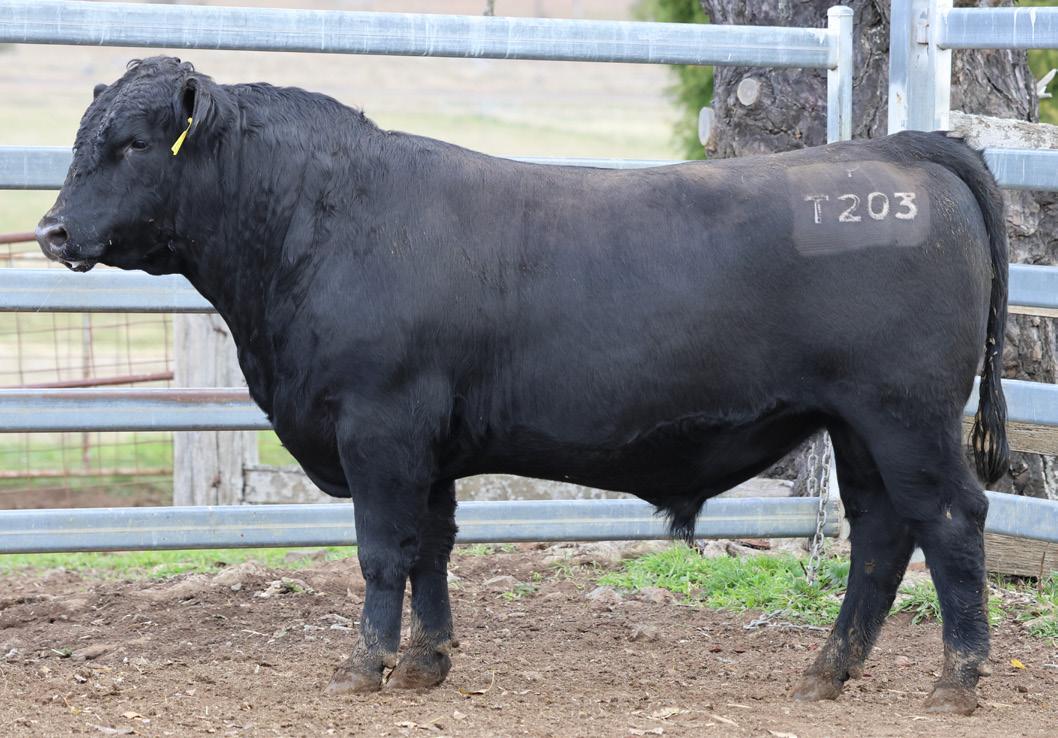



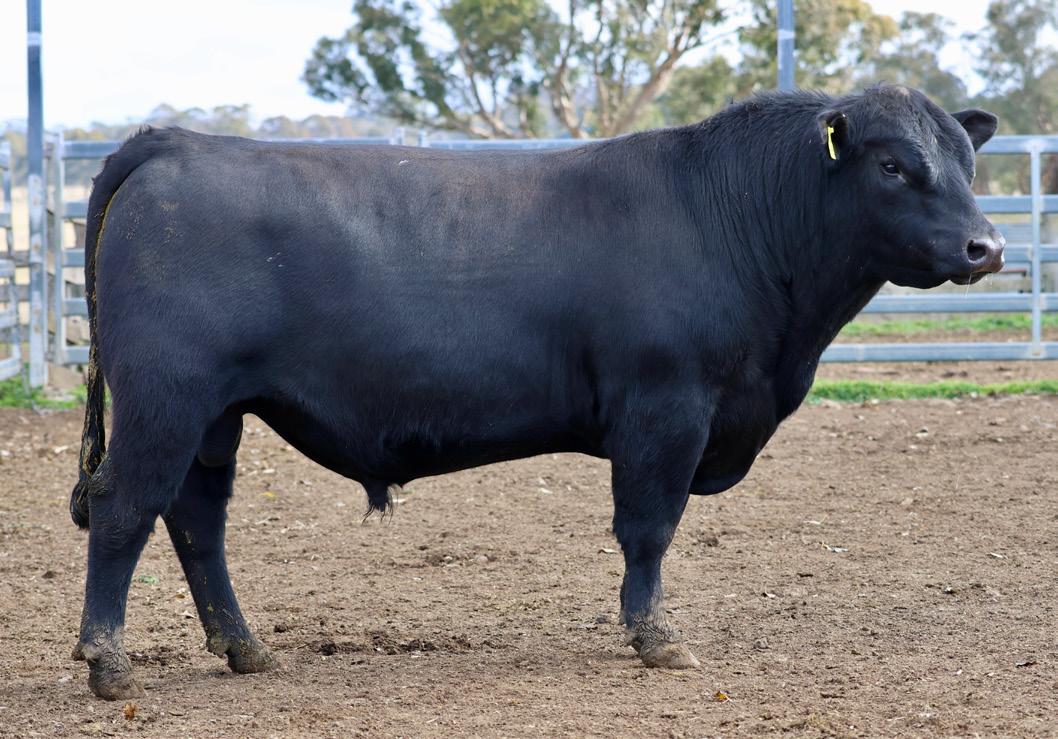
S S BRICKYARDPV
Traits observed: GL,CE,BWT,200WT,DOC,Genomics


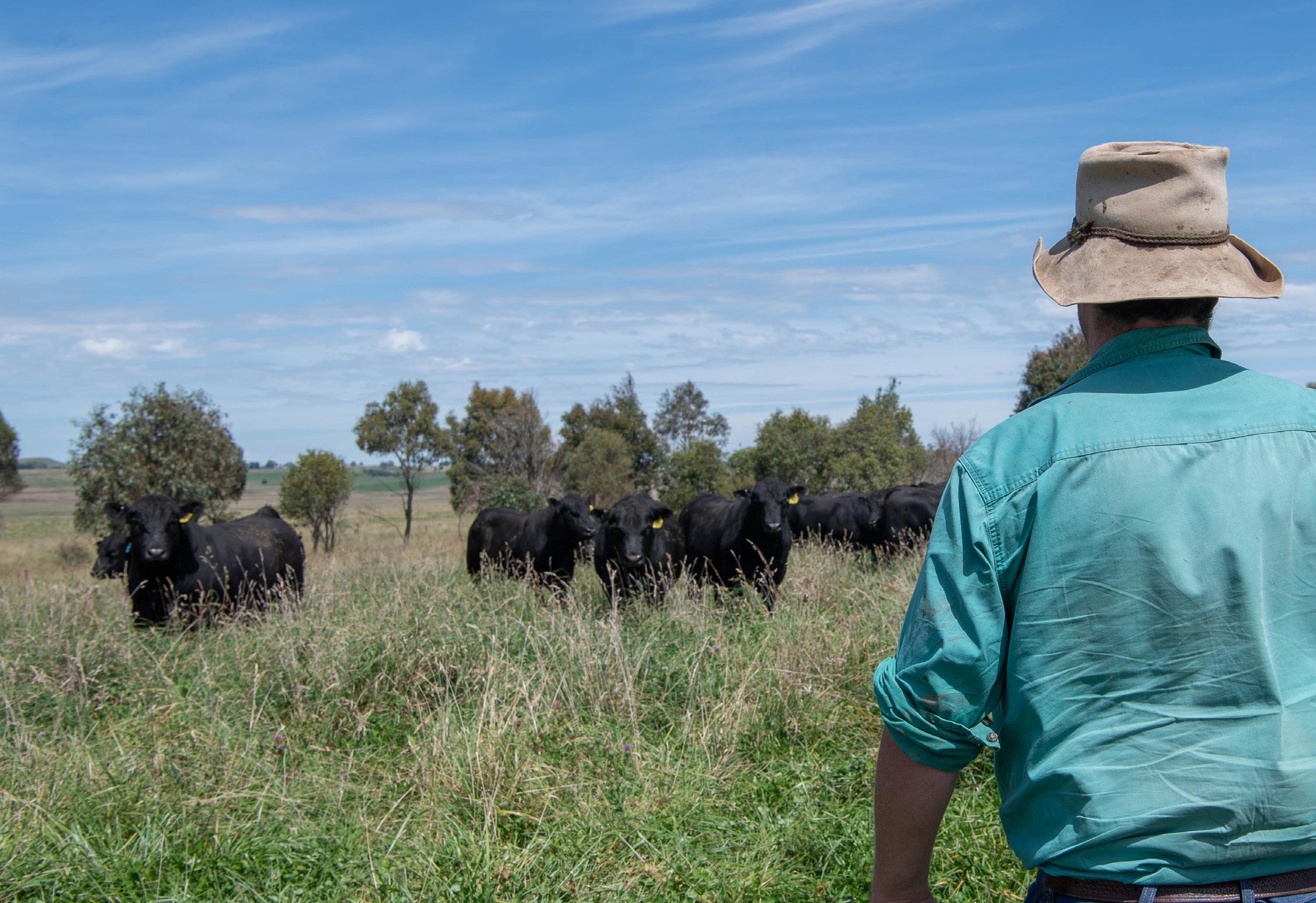
Traits observed: GL,BWT,200WT,400WT,600WT,SC,Scan(EMA,Rib,Rump,IMF),DOC,Structure(Claw Set x 1, Foot Angle x 1),Genomics
Notes: Used in the Bald Blair commercial herd in Spring 2023, over maiden dams withcalves at foot, greta growth, caracse and EMA. Purchaser: $

Traits observed: BWT,200WT,400WT,600WT,SC,Scan(EMA,Rib,Rump,IMF),DOC,Genomics
Notes: Another Q1149 sire, used alonside T113 in the 2023 Spring Joining. Great IMF.

SIRE: TEHAMA PATRIARCH F028PV
Traits observed: BWT,200WT,400WT,600WT,SC,Scan(EMA,Rib,Rump,IMF),DOC,Structure(Claw Set x 1, Foot Angle x 1),Genomics Notes: A really sound Patriarch son, also used in the Bald Blair commercial Spring Joining.


SIRE: TE MANIA QONTEMPLATE Q1149PV
DAM: BALD BLAIR N280PV
Traits observed: GL,BWT,200WT,400WT,600WT,SC,Scan(EMA,Rib,Rump,IMF),DOC,Structure(Claw Set x 1, Foot Angle x 1),Genomics
Notes: A Q1149 son out of NBBN280, Dam to lot 65; NBB23U199. His size belies his potential for growth, and has good carcase EBV’s as well.
Purchaser: $




SIRE: TEHAMA PATRIARCH F028PV DAM: BALD BLAIR R39PV
Traits observed: BWT,200WT,400WT,600WT,SC,Scan(EMA,Rib,Rump,IMF),DOC,Structure(Claw Set x 1, Foot Angle x 1),Genomics
Notes: Another sound Patriarch son. Better suited for use over maiden Dams 2 years and above.

Traits observed: BWT,200WT,400WT,600WT,SC,Scan(EMA,Rib,Rump,IMF),DOC,Structure(Claw Set x 1, Foot Angle x 1),Genomics Notes: A Patriarch son suitable for use over Heifers.



Traits observed: BWT,200WT,400WT,600WT,SC,Scan(EMA,Rib,IMF),DOC,Structure(Claw Set x 1, Foot Angle x 1),Genomics
Notes: Another NBBQ258 son, see also Lot 62 NBB23U85. Proven cow pedigree. Calvine Ease and IMF (one for the highest in this years catalogue).




Traits observed: GL,BWT,200WT,400WT,600WT,SC,Scan(EMA,Rib,Rump,IMF),DOC,Structure(Claw Set x 1, Foot Angle x 1),Genomics Notes: A L519 son, calving ease and carcase.




TEHAMA PATRIARCH F028PV
Traits observed: BWT,200WT,400WT,600WT,SC,Scan(EMA,Rib,Rump,IMF),DOC,Structure(Claw Set x 1, Foot Angle x 1),Genomics
Notes: A Patriarch son, out of a Musgrave Exclusive 316 dam, suitable for use over heifers.

Traits observed: BWT,200WT,400WT,600WT,SC,Scan(EMA,Rib,Rump,IMF),DOC,Structure(Claw Set x 1, Foot Angle x 1),Genomics
Notes: An AI/ET son of Patriarch, out of R39. Best suite for use on heifers.
$



SIRE: RENNYLEA L519PV
Traits observed: BWT,200WT,400WT,600WT,Scan(EMA,Rib,Rump,IMF),DOC,Genomics
Notes: An L519 son out of a Black Pearl daughter.
BALD BLAIR M97PV
Traits observed: BWT,200WT,400WT,600WT,SC,Scan(EMA,Rib,Rump,IMF),DOC,Structure(Claw Set





Traits observed: BWT,200WT,400WT,600WT,SC,Scan(EMA,Rib,Rump,IMF),DOC,Structure(Claw Set x 1, Foot Angle x 1),Genomics
Notes: Suitable for use on Heifers.



Traits observed: BWT,200WT,400WT,600WT,SC,Scan(EMA,Rib,Rump,IMF),DOC,Structure(Claw




BALD BLAIR Q155PV
Traits observed: BWT,200WT,400WT,600WT,SC,Scan(EMA,Rib,Rump,IMF),DOC,Structure(Claw Set x 1, Foot Angle x
Notes: A High EMA and IMF son of Q155. Suitable for use on heifers.

Traits observed: BWT,200WT,400WT,600WT,SC,Scan(EMA,Rib,Rump,IMF),DOC,Structure(Claw Set x 1, Foot Angle x 1),Genomics
Notes: A Moderate growth Q155 son, good EMA and IMF. Better suited to Maiden dams 2 years and over.
$

Notes: A High EMA and IMF son of Q155. Suitable for use on heifers.


SIRE: BALD BLAIR QUEBEC Q133PV
BALD BLAIR R139PV
Traits observed: BWT,200WT,400WT,600WT,SC,Scan(EMA,Rib,Rump,IMF),DOC,Structure(Claw Set x 1, Foot Angle x 1),Genomics
Notes: A Q133 son, with IMF in top 5% of breed, suitable for use on heifers.
Traits observed: BWT,200WT,400WT,600WT,SC,Scan(EMA,Rib,Rump,IMF),DOC,Structure(Claw Set x 1, Foot Angle x 1),Genomics Notes: Suitable for use on heifers.




BWT,200WT,400WT,600WT,SC,Scan(EMA,Rib,Rump,IMF),DOC,Structure(Claw
Traits observed: BWT,200WT,400WT,600WT,SC,Scan(EMA,Rib,Rump,IMF),DOC,Structure(Claw Set x 1, Foot Angle x 1),Genomics Notes: Suitable for use over heifers.




SIRE: BALD BLAIR MOMENTOUS R71PV
TYPE AND STRUCTURAL ASSESSMENT
Traits observed: BWT,200WT,400WT,DOC,Structure(Claw Set x 1, Foot Angle x 1),Genomics Notes: Suitable for use over heifers.




Number of heifers to be joined:
Number of cows to by joined:
Using the rule of thumb of joining one yearling bull to 25 – 30 females and one two year old bull to 50 females, work out the number of bulls required to successfully join your herd. It is always a good idea to have a spare bull or 2 in case of unexpected bull breakdowns, such as injury or illness.
Number of heifer bulls ready to work already in our herd:
(Have they been semen morphology tested, vaccinated and are ready to work?) Yes / No
Number of heifer bulls required for joining:
Number of heifer bulls we need to purchase:
Number of older, mature bulls ready to work already in herd:
(Have they been semen morphology tested, vaccinated and ready to work?) Yes / No
Number of 2 years and older bulls required for joining:
Number of 2 year old bulls we need to purchase:
WHAT IS YOUR BREEDING OBJECTIVE?
Commercial self replacing angus herd targeting overall improvement in profitability: Check out Angus Breeding Index
Commercial self replacing herd targeting pasture grown steers for feedlot trade: Checkout Heavy Grain Index
Commercial self replacing herd targeting domestic supermarket trade: Check out Domestic Index.
Commercial self replacing herd targeting pasture finished heavy steers: Check out the Heavy Grass Index EBVs to focus on: Bwt, CE, GL, 600D Growth, Cwt, EMA, IMF
Lots that meet our criteria for heifer bulls:
Lots that meet our criteria for joining cows:
EBVs to focus on:
Questions to ask Sam over the phone on 02 6779 2141, 0438 792 140 or via email samwhite@bladblair.com.au.
Ensure you are registered with AuctionsPlus and are familiar with the platform prior to the sale check out www. auctionsplus.com.au for details.
Inspections are welcome anytime.
Bringing your new bull home:
All Bulls at Bald Blair have been run as part of large groups until 8 weeks prior to sale, then put into smaller groups and supplemented in the lead up to the sale. It is important to remember this when you get your bull or bulls home. All bulls have been worked by horses, 4WD bikes, tray back utility and dogs, and have had people walking amongst them. Inspite of this they still need to be respected and treated appropriately.
We recommend Insuring your bull prior to delivery to your property.
Arrange appropriate transport for safe delivery of your bull to your property.
When your bull gets home, treat him quietly and have a companion animal for him, either steers or cows. Leave them in the yards for a few days with feed and water until they are settled. All Bald Blair bulls have had their annual boosters for Pestigard, 7n1 and Lepto and Vibrio. In 2022/23 all bulls have received a tick fever vacine also.Once settled then they can go out into a holding paddock; keep feeding them to help settle them in to your farm.
Newly purchased young bulls should not be placed with older bulls upon return, or during mating.
During Mating:
Use them either in single sire mating groups or as multi-sire mating groups with bulls the same age. The mating ratio is usually 2% two year bulls (1:50) or 3% yearling bulls (1:30). Make sure you check out your young bulls, in fact all your bulls, during mating regularly. Spend time watching them, watch for lameness and injury around or near the sheath. If using them in single sire mating groups consider rotating them around groups to cover for bull infertility. Have a spare bull on hand to replace any bulls that may be injured during mating. Replace bulls immediately if you suspect anything.
For more information I recommend the Angus Society of Australia brochure Bring your New Bull Home Article, which has been the reference for this article.
Finally, keep in touch and let me know how your bull or bulls are performing. Thankyou for your support.


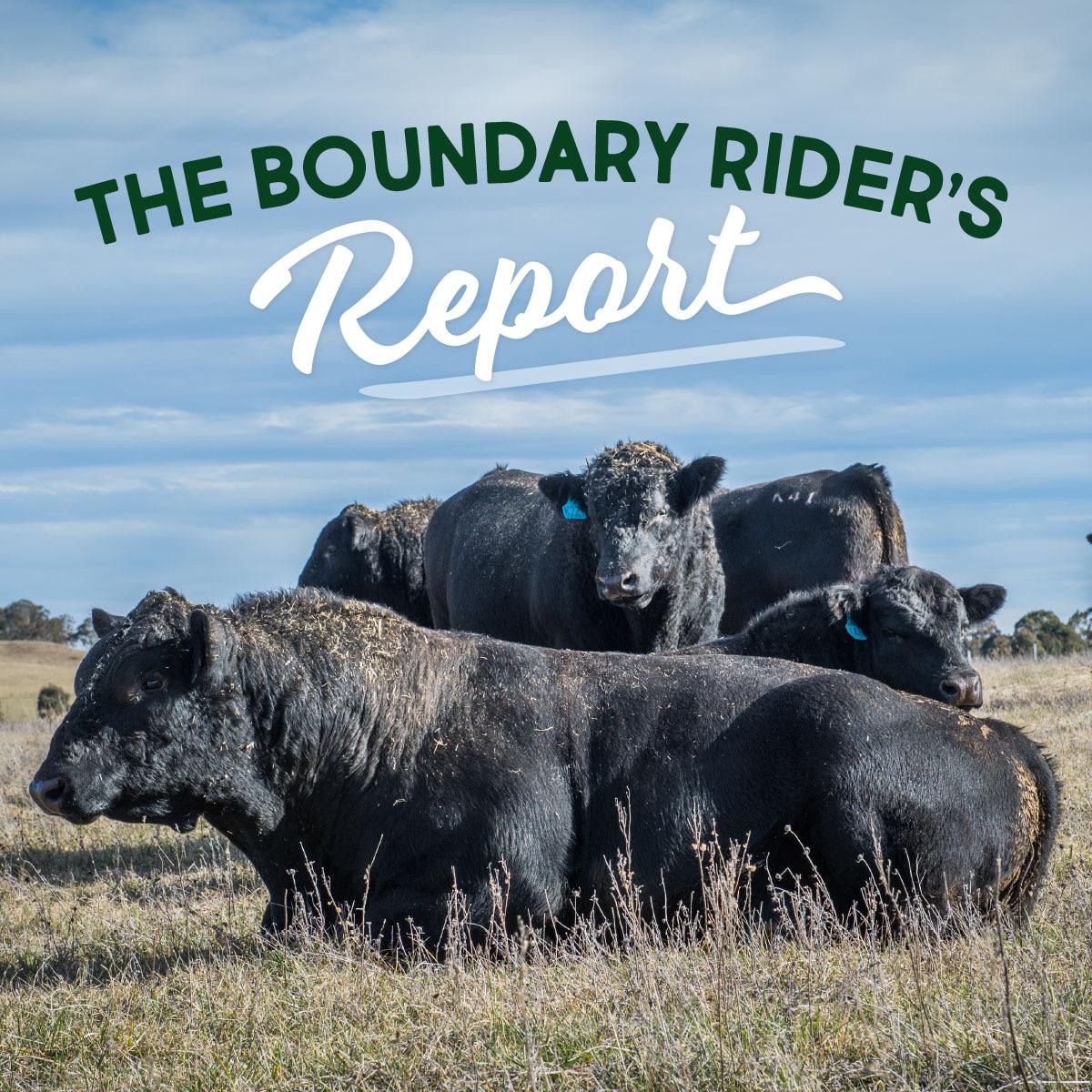

SIRE: H P C A INTENSITY#
BORN: 20/8/2015
Traits observed: BWT,200WT,400WT(x2),600WT,SC,Scan(EMA,Rib,Rump,IMF),DOC,Genomics
Notes: With over 4700 Progeny analysed in TACE, this highly proven Australian sire is still making a massive contribution to the herd. Breeding very sound, quiet progeny with great Growth and Caracse Attributes. we have 3 sons of his with progeny in our herd, NBBP52, NBBP69, NBBP97. More recently intoduced another young NORL519 sire, NBB22T228 into our breeding programme, first progeny due this year.
Traits observed: GL,BWT,200WT,400WT,600WT,SC,Scan(EMA,Rib,Rump,IMF),DOC,Genomics
Notes: A really sound L519 son, out of a proven older breeder, NBBH108, Future Direction 4268 Daughter. He has over 100 porgey analysed through TACE, with proven brreders retained within our Stud Herd. Exhibiting good moderate growth and great carcase attributes.
SIRE: RENNYLEA
Traits observed: GL,BWT,200WT,400WT,600WT,SC,Scan(EMA,Rib,Rump,IMF),DOC,Genomics
Notes: Another really sound L519 son, sold to Madayan Livestock in South Australia. Also featured in Agrigene catalogue also. Over 190 progeny analysed through TACE. Another good
decsions, by AI as we move forward.
BORN: 3/2/2017
Traits observed: Structure(Claw Set x 1, Foot Angle x 1),Genomics
Notes: Patriarch has been used in the Bald Blair herd for a number of years now, introduced as a Calving Ease Outcross pedigree. Now with over 300 head Analyse fthrough TACE. Proven Calving Ease sire with moderate growth, good carcse EBV’s, and good temperament. One of only a few bulls with good IMF, negative NFI-F and positive Rib and Rump fat. Producing sound progeny here at Bald Blair. The first of his son are working in the Bald Blair stud herd with progeny due shortly.
Traits observed: BWT,200WT,400WT,SC,Scan(EMA,Rib,Rump,IMF),DOC,Structure(Claw Set x 1, Foot Angle x 1),Genomics
Notes: Qontemplate was purchased as part of a syndicate, to add some outcross pedigee into our breeding programme.
Traits observed: GL,CE,BWT,200WT,400WT,600WT,SC,Scan(EMA,Rib,Rump),Genomics
Notes: A moderate growth son of S Powerpoint WS 5503 son, out of a Prophet Daughter, NBBM73. A Proven Calving Ease sire, with Positive Fat and very High IMF, in top 2% of breed.
BORN: 2/8/2018
SIRE: H P C A PROCEEDPV DAM: BALD BLAIR PEARL M150PV
Traits observed: BWT,200WT,400WT,600WT,SC,Scan(EMA,Rib,Rump,IMF),DOC,Genomics
Notes: Another Moderate growth son of H P C A Proceed, out of a Black Pearl Daughter. Very Good EMA and IMF EBV’s, used in our herd to keep adding to those important carcase attributes.
Traits observed: GL,CE,BWT,200WT,400WT,600WT,SC,Scan(EMA,Rib,IMF),DOC,Genomics
Notes: R71, is one of two Lawsons Momentous M518 sons to be retained and used in our stud. Still being proven within herd, he has a son, with potential to be retained and used in the stud in the Spring Joining programme. Great Carcase Attributes, moderate growth rstricted MCwt.

Traits observed: CE,BWT,200WT,400WT,SC,Scan(EMA,Rib,Rump,IMF),DOC,Genomics
Notes: A Paratrooper son, retained for stud duties with a different pedigree and a great set EBV’s for Calving Ease, Growth, NFI-F, Cwt, EMA and IMF. Used as a yearling in 2022, he has been widely used as a cover sire in 2 Spring and 2 Autumn Joinings He is sound. This sire is also been used in the ASBP, our own Commercial Herd to AI Heifers and also Clients herds Commercial AI Programmes.
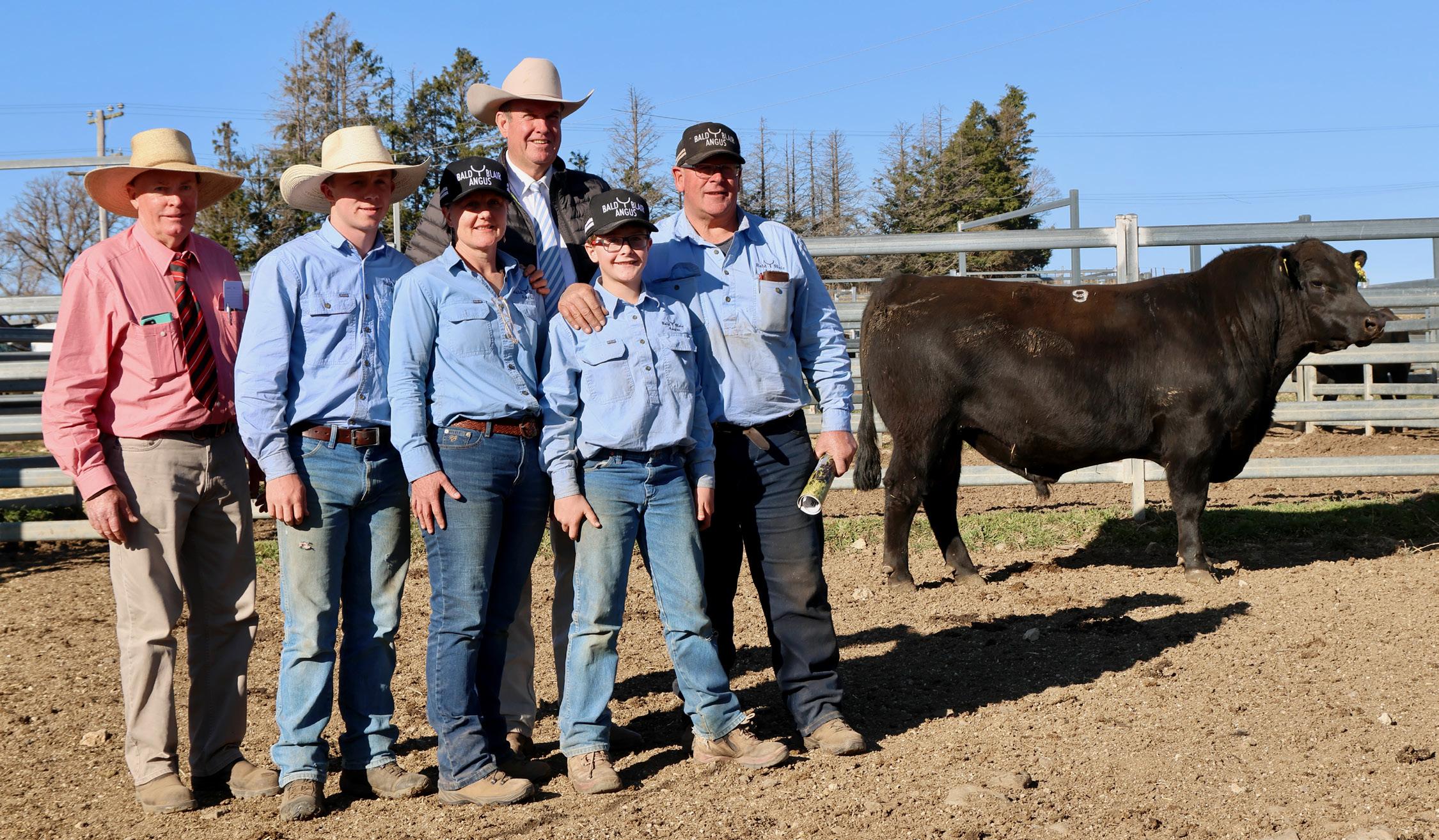
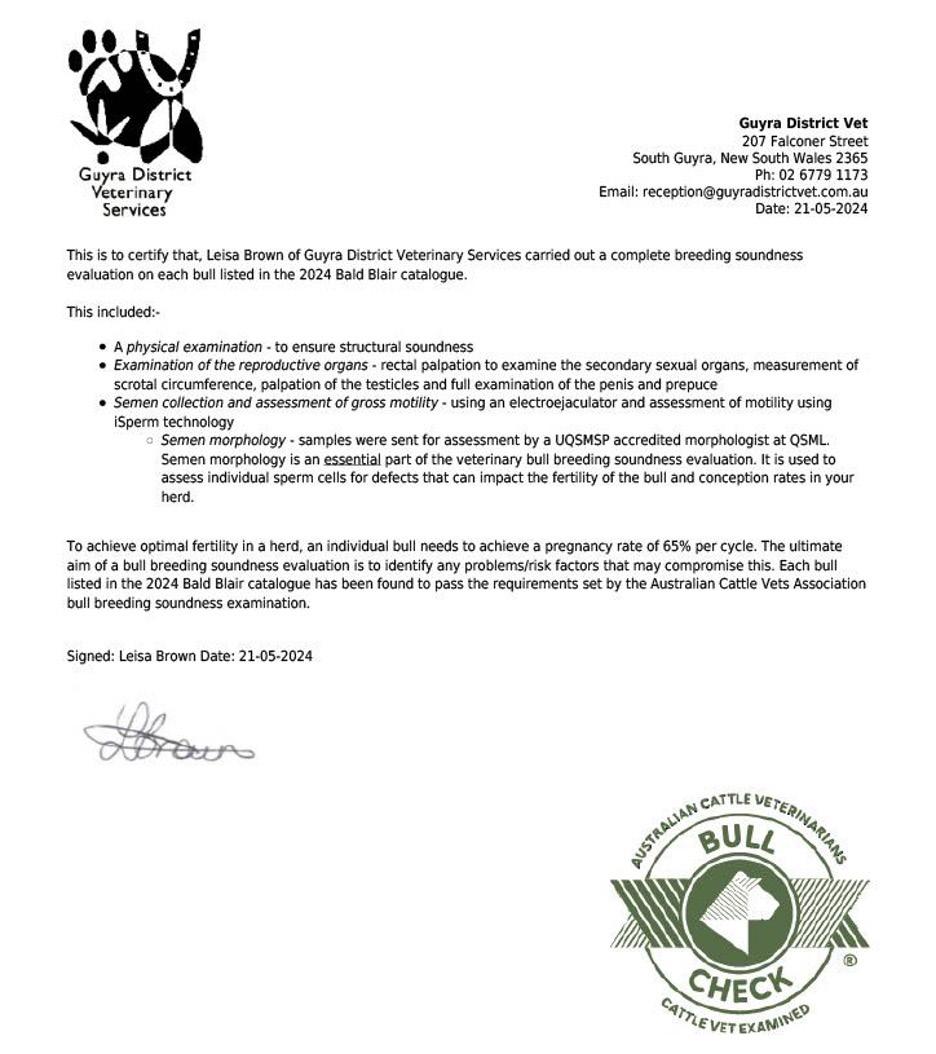
Attention Buyer: Animal details included in this catalogue, including but not limited to pedigree, DNA information, Estimated Breeding Values (EBVs) and Index values, are based on information provided by the breeder or owner of the animal. Whilst all reasonable care has been taken to ensure that the information provided in this catalogue was correct at the time of publication, Angus Australia will assume no responsibility for the accuracy or completeness of the information, nor for the outcome (including consequential loss) of any action taken based on this information.
Purchaser Trading Name: PIC:
Contact Name:
Email:
Agents Trading Name:
Agents Address:
Do you require society transfers? No Yes
PLEASE NOTE FOLLOWING DISCLAIMER: Insurance risk of any stud animal sold at auction transfers to the purchaser at the fall of the hammer. Any animal remaining on the vendor’s property is at the risk of the purchaser, it is advised at a minimum that a full loss of use insurance policy is taken at time of sale.
Stud animals are not covered by commercial livestock transit insurance at any point.
Please note – if you intend on bidding via Auctions Plus, you need to register with AuctionsPlus prior to sale day. This registration does not cover those intending to bid solely on AuctionsPlus.
Also, it is vitally important that on sale day you collect your buyers registration (bidding) number and acknowledge that you have read, understood and agree to be bound by the terms and conditions as stated on our sale day buyers registration cards and as on display at the sale office .
Signature:
Print Name:
Please return this form to Elders Armidale & Guyra –dg_armidale@elders.com.au
Phone 02 6775 4500
Alternatively –
Date:
Please scan the QR code which will direct you to our online Bull Sale Registration Form via the Bald Blair website

Recessive Genetic Conditions - Information For Bull Buyers
This is information for bull buyers about the recessive genetic conditions, Arthrogryposis Multiplex (AM), Hydrocephalus (NH), Contractural Arachnodactyly (CA) and Developmental Duplications (DD).
Putting undesirable Genetic Recessive Conditions in perspective
All animals, including humans, carry single copies (alleles) of undesirable or “broken” genes. In single copy form, these undesirable alleles usually cause no harm to the individual. But when animals carry 2 copies of certain undesirable or “broken” alleles it often results in bad consequences. Advances in genomics have facilitated the development of accurate diagnostic tests to enable the identification and management of numerous undesirable or “broken” genes. Angus Australia is proactive in providing its members and their clients with relevant tools and information to assist them in the management of known undesirable genes and our members are leading the industry in their use of this technology.
What are AM, NH, CA and DD?
Key point: With today’s DNA tools undesirable genetic conditions can be managed!
AM, NH, CA and DD are all recessive conditions caused by “broken” alleles within the DNA of individual animals. When a calf inherits 2 copies of the AM or NH alleles their development is so adversely affected that they will be still-born. In other cases, such as CA and DD, calves carrying 2 copies of the broken allele may reach full-term. In such cases the animal may either appear relatively normal, or show physical symptoms that affect their health and/or performance.
How are the conditions inherited?
Key point: The number of reported observations of AM, NH, CA and DD calves is very low and there is certainly no need for panic.
Research in the U.S. and Australia indicates that AM, NH, CA and DD are simply inherited recessive conditions. This means that a single gene (or pair of alleles) controls the condition. For this mode of inheritance two copies of the undesirable allele need to be present before the condition is seen; in which case you may get an abnormal calf. A more common example of a trait with a simple recessive pattern of inheritance is black and red coat colour.
Animals with only one copy of the undesirable allele (and one copy of the normal form of the allele) appear normal and are known as “carriers”.
What happens when carriers are mated to other animals?
Carriers, will on average, pass the undesirable allele to a random half (50 %) of their progeny.
When a carrier bull and carrier cow is mated, there is a 25% chance that the resultant calf will inherit two normal alleles, a 50% chance that the mating will result in a carrier (i.e. with just 1 copy of the undesirable allele, and a 25% chance that the calf will inherit two copies of the undesirable gene.
If animals tested free of the undesirable gene are mated to carrier animals the condition will not be expressed at all. All calves will appear normal, but approximately half (50%) could be expected to be carriers.
How is the genetic status of animals reported?
Key point: For the condition to be expressed the undesirable gene needs to be present on both sides of the pedigree and both the sire and dam need to be a carrier.
DNA-based diagnostic tests have been developed which can be used to determine whether an individual animal is either a carrier or free of the alleles resulting in AM, NH, CA or DD.
Angus Australia uses advanced software to calculate the probability of (untested) animals to being carriers of AM, NH, CA or DD. The software uses the test results of any relatives in the calculations and the probabilities may change as new results for additional animals become available.
The genetic status of animals is being reported using five categories. For NH, CA and DD, simply replace AM in the below table with NH, CA or DD.
AMF Tested AM free
AMFU Based on pedigree AM free – Animal has not been tested AM__% __% probability the animal is an AM carrier
Registration certificates and the Angus Australia web-database display these codes. This information is displayed on the animal details page and can be accessed by conducting an “Animal Search” from the Angus Australia website or looking up individual animals listed in a sale catalogue.
Key point: The genetic status of an animal is subject to change and will be re-analysed and adjusted each week as DNA test results of relatives are received.
Your decision on the importance of the genetic condition status of replacement bulls should depend on the genetics of your cow herd (which bulls you previously used) and whether some female progeny will be retained or sold as breeders.
Most Angus breeders are proactive and transparent in managing known genetic conditions, endeavouring to provide the best information available. The greatest risk to the commercial sector from undesirable genetic recessive conditions comes from unregistered bulls with unknown genetic background. The genetic condition testing that Angus Australia seedstock producers are investing in provides buyers of registered Angus bulls with unmatched quality assurance.

The TransTasman Angus Cattle Evaluation is the genetic evaluation program adopted by Angus Australia for Angus and Angus influenced beef cattle. The TransTasman Angus Cattle Evaluation uses Best Linear Unbiased Prediction (BLUP) technology to produce Estimated Breeding Values (EBVs) of recorded cattle for a range of important production traits (e.g. weight, carcase, fertility).
The TransTasman Angus Cattle Evaluation is an international genetic evaluation and includes pedigree, performance and genomic information from the Angus Australia and Angus New Zealand databases, along with selected information from the American and Canadian Angus Associations.
The TransTasman Angus Cattle Evaluation utilises a range of genetic evaluation software, including the internationally recognised BLUPF90 family of programs, and BREEDPLAN beef genetic evaluation analytical software, as developed by the Animal Genetics and Breeding Unit (AGBU), a joint institute of NSW Agriculture and the University of New England, and Meat and Livestock Australia Limited (MLA).
An animal’s breeding value can be defined as its genetic merit for each trait. While it is not possible to determine an animal’s true breeding value, it is possible to estimate it. These estimates of an animal’s true breeding value are called EBVs (Estimated Breeding Values). EBVs are expressed as the difference between an individual animal’s genetics and a historical genetic level (i.e. group of animals) within the TACE genetic evaluation, and are reported in the units in which the measurements are taken.
TACE EBVs can be used to estimate the expected difference in the genetics of two animals, with the expected difference equating to half the difference in the EBVs of the animals, all other things being equal (e.g. they are joined to the same animal/s).
For example, a bull with a 200 Day Growth EBV of +60 would be expected to produce progeny that are, on average, 10 kg heavier at 200 days of age than a bull with a 200 Day Growth EBV of +40 kg (i.e. 20 kg difference between the sire’s EBVs, then halved as the sire only contributes half the genetics). Or similarly, a bull with an IMF EBV of +3.0 would be expected to produce progeny with on average, 1% more intramuscular fat in a 400 kg carcase than a bull with a IMF EBV of +1.0 (i.e. 2% difference between the sire’s EBVs, then halved as the sire only contributes half the genetics).
EBVs can also be used to benchmark an animal’s genetics relative to the genetics of other Angus or Angus infused animals in Australia. To benchmark an animal’s genetics relative to other Angus animals, an animal’s EBV can be compared to the EBV reference tables, which provide: the breed average EBV the percentile bands table
The current breed average EBV is listed on the bottom of each page in this publication, while the current EBV reference tables are included at the end of these introductory notes. For easy reference, the percentile band in which an animal’s EBV ranks is also published in association with the EBV.
Considering Accuracy
An accuracy value is published with each EBV, and is usually displayed as a percentage value immediately below the EBV. The accuracy value provides an indication of the reliability of the EBV in estimating the animal’s genetics (or true breeding value), and is an indication of the amount of information that has been used in the calculation of the EBV.
EBVs with accuracy values below 50% should be considered as preliminary or of low accuracy, 50-74% as of medium accuracy, 75-90% of medium to high accuracy, and 90% or greater as high accuracy.
EBVs are calculated for a range of traits within TACE, covering calving ease, growth, fertility, maternal performance, carcase merit, feed efficiency and structural soundness. A description of each EBV included in this publication is provided on page 57.


EBVs are calculated for a range of traits within TACE, covering calving ease, growth, fertility, maternal performance, carcase merit, feed efficiency and structural soundness. A description of each EBV included in this publication is provided below.
CEDir % Genetic differences in the ability of a sire’s calves to be born unassisted from 2 year old heifers.
CEDtrs % Genetic differences in the ability of a sire’s daughters to calve unassisted at 2 years of age.
GL days Genetic differences between animals in the length of time from the date of conception to the birth of the calf.
BW kg Genetic differences between animals in calf weight at birth.
200 Day kg Genetic differences between animals in live weight at 200 days of age due to genetics for growth.
Higher EBVs indicate fewer calving difficulties in 2 year old heifers.
Higher EBVs indicate fewer calving difficulties in 2 year old heifers.
Lower EBVs indicate shorter gestation length.
Lower EBVs indicate lighter birth weight.
Higher EBVs indicate heavier live weight.
400 Day kg Genetic differences between animals in live weight at 400 days of age. Higher EBVs indicate heavier live weight.
600 Day kg Genetic differences between animals in live weight at 600 days of age. Higher EBVs indicate heavier live weight.
MCW kg Genetic differences between animals in live weight of cows at 5 years of age.
Milk kg Genetic differences between animals in live weight at 200 days of age due to the maternal contribution of its dam.
DtC days Genetic differences between animals in the time from the start of the joining period (i.e. when the female is introduced to a bull) until subsequent calving.
SS cm Genetic differences between animals in scrotal circumference at 400 days of age.
CWT kg Genetic differences between animals in hot standard carcase weight at 750 days of age.
EMA cm2 Genetic differences between animals in eye muscle area at the 12/13th rib site in a 400 kg carcase.
Rib Fat mm Genetic differences between animals in fat depth at the 12/13th rib site in a 400 kg carcase.
P8 Fat mm Genetic differences between animals in fat depth at the P8 rump site in a 400 kg carcase.
RBY % Genetic differences between animals in boned out saleable meat from a 400 kg carcase.
IMF % Genetic differences between animals in intramuscular fat (marbling) at the 12/13th rib site in a 400 kg carcase.
NFI-F kg/ day Genetic differences between animals in feed intake at a standard weight and rate of weight gain when animals are in a feedlot finishing phase.
Doc % Genetic differences between animals in temperament.
Foot Angle score Genetic differences in foot angle (strength of pastern, depth of heel).
Claw Set score Genetic differences in claw set structure (shape and evenness of claws).
$A $ Genetic differences between animals in net profitability per cow joined in a typical commercial self replacing herd using Angus bulls. This selection index is not specific to a particular market end-point, but identifies animals that will improve overall net profitability in the majority of commercial, self replacing, grass and grain finishing beef production systems.
$GN $ The Heavy Grain Index ($GN) and Heavy Grain Low Feed Cost Index ($GNL) estimate the genetic differences between animals in net profitability per cow joined in a commercial self replacing herd targeting pasture grown steers with a 250 day feedlot finishing period for the grain fed high quality, highly marbled markets. Daughters are retained for breeding and therefore female traits are of importance.
Steers are assumed to be slaughtered at 800 kg live weight (455 kg carcase weight with 30 mm P8 fat depth) at 24 months of age, with a significant premium for steers that exhibit superior marbling.
The $GN index caters for production systems where pasture is fully utilised for the majority of the year
Higher EBVs indicate heavier mature weight.
Higher EBVs indicate heavier live weight.
Lower EBVs indicate shorter time to calving.
Higher EBVs indicate larger scrotal circumference.
Higher EBVs indicate heavier carcase weight.
Higher EBVs indicate larger eye muscle area.
Higher EBVs indicate more fat.
Higher EBVs indicate more fat.
Higher EBVs indicate higher yield.
Higher EBVs indicate more intramuscular fat.
Lower EBVs indicate more feed efficiency.
Higher EBVs indicate better temperament.
Lower EBVs indicate more desirable foot angle.
Lower EBVs indicate more desirable claw structure.
Higher selection indexes indicate greater profitability.
Higher selection indexes indicate greater profitability.

All Bald Blair bulls were inspected and assessed on the IBMS Type/Structure system.
All bulls in this catalogue were considered acceptable for soundness and Muscling.
If any potential buyers wish to discuss these bulls prior to the sale or on sale day, please contact Dick Whale on 0427 697 968 or at the sale, or discuss this system with Sam White.
IBMS Genetic Type Summary (GTS) Traits:
DESCRIPTIVE TRAITS
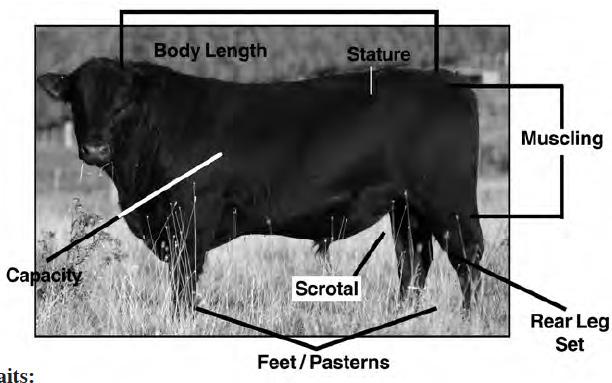
Stature - Evaluation of animals for maturity pattern and frame size. A score of 25 is average (Frame 5.5). This score may be influenced by age of dam, nutrition, etc. Scores greater than 25 indicate larger framed, latter maturing cattle.
Capacity – Evaluation combines spring of rib, and width of chest floor. Scores higher than 38 indicate a bull with greater capacity.
Body Length – Evaluation of body length from point of shoulder to pin bone. Scores higher than 25 indicate longer body length.
Muscle Score – is the muscularity devoid of subcutaneous fat. Higher scores indicate animals with higher yield and dressing percentage attributes. Scores 30 = C, 35 = C+, 40 = B-, 45 = B.
Doability – is the ability of an animal to deposit fat in fat depots, relative to their peers under a common management regime.
Sheath – evaluating the tightness of the sheath on bulls. 5 scores are tight, 1 score bulls have very loose and pendulous sheaths.
STRUCTURAL SOUNDNESS TRAITS
Feet – Evaluation of the shape and evenness of the front and rear feet, with 5 being ideal. Scores greater than 5 exhibit some scissor claw in feet. Scores less than 5 are open clawed.
Pastern Angle – Evaluation of strength of the pastern, depth of heel, and length of foot, with 5 ideal. Scores greater than 5 tend towards weaker pasterns and shallower heel, less than 5 towards being stubbed toe.
Rear Leg Angle – Evaluation of the angle through the hock joint. Scores greater than 5 indicate more sickle hocked, less than 5 indicate animals tending toward being straight (post legged).
In the interest of buyers, and to prevent the occurrence of mistakes, all instructions concerning the delivery and trucking of stock must be given in writing and signed by the buyer or his representative.



DIRECTIONS:
Bald Blair is located at 6486 Guyra Road, 10kms East of Guyra on the Guyra Ebor Road. The closest airport is Armidale Regional Airport, approximately 38kms South of Guyra on the New England Highway.
We are 430kms from Brisbane on the New England Highway and 513kms from Sydney on Thunderbolt’s Way and then New England Highway. Accommodation options include Motels in Guyra and farm stays on Airbnb in the Guyra district.
for supporting the Bald Blair Angus Female Sale.
We look forward to seeing you at our 2024 Bull Sale.


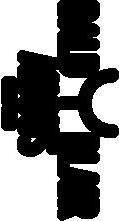

SUNDAY 4 TH AUGUST · 10AM2PM